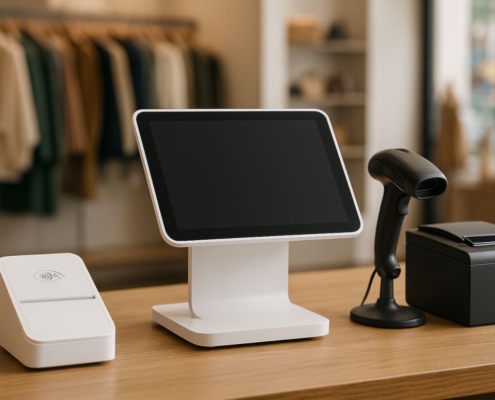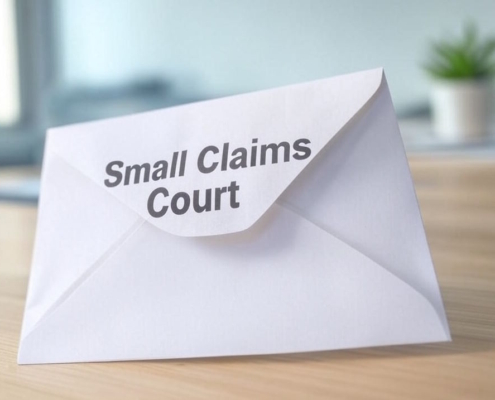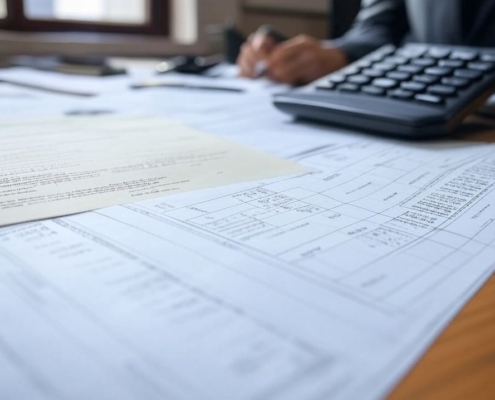What is a business receipt?
For your business to be successful, it is essential to maintain accurate, organized financial records. A major part of this is having a record of transactions through receipts. Regardless of whether you are the owner of a small business or an accountant at a big corporation, having receipts is critical for businesses of every size. Let’s take a look at why maintaining receipts is so important for businesses and then go over some tips of how to create a system for categorizing, organizing, and storing receipts.
E-mail receipts and business receipts are really the same thing. They are written documents that function as evidence of a transaction between a customer and a company. They usually include the amount, date, purchase description, and business name. There may be different names for various kinds of business receipts, but they are all of equal importance. You should keep track of them to prove expenses and income when tax season comes around. Business receipts come in a few different forms. The following are some of the most common:
1. Sales receipts
These receipts are provided to customers as evidence of payment for services or goods that were bought from the company. The company itself should maintain a copy.
2. Purchase receipts
A business receives these when it purchases services or goods from vendors or suppliers.
3. Expense receipts
These are supplied when a company incurs costs, including web design, office supplies, travel, business lunch, or any other occasion where the company spends money in the course of doing business.
4. Payment receipts
These are provided to a customer when a company gets payment from a client or customer.
5. Refund receipts
These are provided when a company gives money back to a customer in exchange for a canceled service or returned product.
Why business receipts are important
It is hard to overemphasize the significance of business receipts. When a business evaluates its own performance, it usually begins with taking a look at company receipts. These are a critical instrument in keeping correct financial records, creating a profit and loss statement, managing costs, and guaranteeing compliance with tax laws.
There are a number of reasons why business receipts are an important part of running a company:
- Accounting and budgeting: A receipt is a proof of purchase that is necessary for keeping track of money and proving your income when tax time rolls around.
- Tracking costs: These papers help businesses keep track of their costs, which is important for making budgets and handling cash flow.
- Taxes and audits: If your company’s financial records are audited, you can use receipts as proof of monetary transactions to dispute any anomalies or errors.
- Returns and refunds: Receipts are useful for keeping track of purchases and inventories, and they are required for processing refunds and returns.
- Customer service: In the event of a disagreement or problem with a payment or transaction, receipts serve as evidence of purchase for both the consumer and the service provider.
How long do you need to keep receipts for your business?
The Internal Revenue Service (IRS) states that the length of time a company is required to retain receipts varies by industry, kind of transaction, and applicable tax rules and regulations. The receipts that pertain to taxes should typically be kept by businesses for a period of three to seven years. As an example, while some states mandate that companies retain tax-related receipts for a maximum of seven years from the date of the tax return, the IRS suggests retaining them for at least three years.
All of this hinges on how the Internal Revenue Service (IRS) defines the statute of limitations, or the time frame during which you can file an amended tax return in order to seek a refund or credit, or within which the IRS may revisit your return to review it. Keep all of your receipts for the statute of limitations. While three years is the standard, keeping company receipts for a minimum of seven years is necessary in the event that you need to claim a loss or bad debt deduction.
Even though the IRS has established these guidelines at this time, rules and regulations may evolve in the future.
Things to remember when keeping records
Gathering, organizing, and storing various documents and receipts is essential. This is what the Internal Revenue Service suggests you keep:
- Gross receipts: These are all of the earnings you receive within a specific tax year. These are all of your sales; you haven’t thought about any of your costs or bills.
- Purchase receipts: When you buy supplies and services for your company, be sure to save the receipts as proof of payment. Also, when people buy from you, they get their very own receipts.
- Bills for expenses: Spending money on behalf of your business is known as expenditures. Travel, local transit, entertainment, and gift-related costs are just a few examples.
- Asset records: Here is where you may record all of the tools and machinery that you use in your company. Computers, machines, and other electrical devices might fall within this category. You need to record this data so you can monitor the acquisition cost, depreciation, and present worth of all your assets.
- Employer tax documents: At the end of each fiscal year, you will have to fill out all of these papers. As much as possible, try to store these somewhere safe.
Make sure these documents are well-organized and readily available for the bare minimum of time that the law mandates. The best course of action is to gather all relevant paperwork and file it away according to tax year.
In addition to ensuring that you are in full compliance with all applicable laws and regulations, keeping accurate records will shed light on the financial health of your company, allowing you to better understand and develop your firm.
The ideal method for keeping and arranging receipts
If you keep your receipts in a safe and orderly area, you won’t have to worry about losing them or having trouble finding them when you need them. When planning where to put important documents and receipts, bear these suggestions in mind.
1. Methods for organizing receipts
Sort your receipts into different categories. To make finding individual receipts simpler in the future, at the very least, arrange them into sales, expenses, and taxes. To keep your small business safe, you should sort your receipts according to tax purposes. Separate receipts for payments and refunds, as well as receipts for purchases and expenses, if you can be that specific.
2. Find a system for keeping receipts
Make sure you pick a consistent and long-lasting means of storing and organizing your receipts, whether it’s physical file cabinets, technological solutions, an app to scan receipts, or accounting software.
3. Clearly mark records
Always include the date, name of the vendor or customer, amount, and any pertinent remarks on any receipts or records you save.
4. Preserve electronic versions
Scanning paper receipts and putting them in a digital folder on your computer or cloud storage is a good idea regardless of the manner you choose to save them.
An Example of a Receipt of Payment and What It Should Contain
A well-crafted and legible receipt of payment is something you, as a business owner, should strive for. The following is a list of items that ought to be on a receipt:
- Heading: Label the paper with “Payment Receipt” to make it clear right away what it’s for.
- Number of Receipt: To make it easier to keep track of purchases, give each receipt a unique number. If at all possible, adopt a system of numbers that corresponds with your invoices. You can easily identify the receipt for each invoice in this way.
- Business Name and Details: Include the company’s complete name, mailing address, and phone number.
- Client Data: Write the client’s name and contact information on the receipt for the company. This makes the receipt more unique and identifies the payer.
- Date of Payment: For a precise record of financial transactions, make sure to include the precise date of payment receipt.
- Amount Paid and Amount Due: Indicate the total cash received and, if relevant, any outstanding balance that the client may have.
- Additions and Deductions: Expenses that were deductible or subject to additional charges should be detailed.
- Method of Payment: Be sure to include the manner of payment (e.g., cash, credit card, bank transfer) so that the record of the transaction can be easily understood.
- Description of the item (optional): Provide a synopsis of the purchased commodity or service. This is of utmost importance in cases where the payment is partial or includes many things.
- Disclosure of Income Tax Information (Required): Assist with tax reporting by including information of any taxes applied to the cost.
- Signature Line: Make sure to provide room for the signature of the individual who will be providing the receipt.
Expert Pointers for Creating a Payment Receipt
The process of making a payment receipt could seem daunting at first. There are a lot of details to include to make it seem professional and do justice to your company’s brand. In order to make useful and understandable receipts for your company, consider the following:
- Personalize the template for your receipt. Personalize a receipt template with your company’s colors and logo to make it stand out. Personalizing your receipts ensures a polished appearance and showcases your brand with each purchase.
- Get receipts sent right away. The receipt for a payment should be sent out immediately after the transaction is processed. By verifying the transaction, you demonstrate responsiveness to your consumer. Furthermore, you will be able to promptly handle any disputes or problems that may emerge.
- Always have a backup, whether it’s digital or physical. Give digital and physical receipts to be extra trustworthy. A digital version is more practical, but a printed or handwritten receipt can serve as tangible evidence of payment.






























